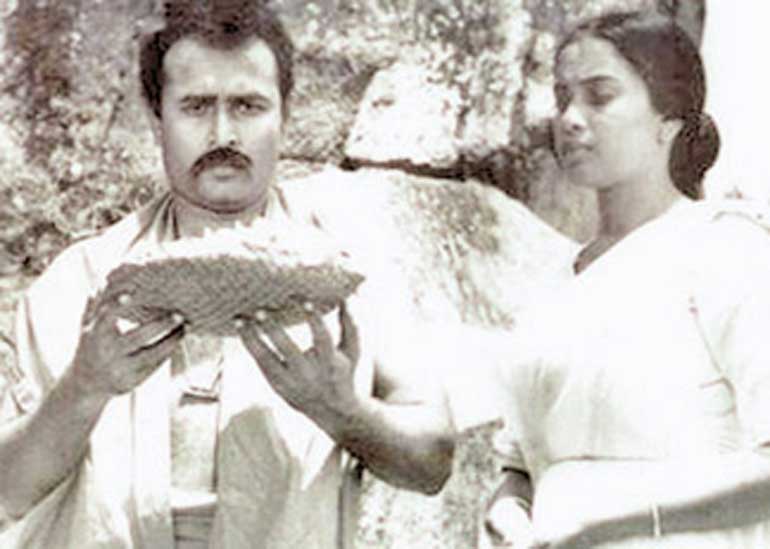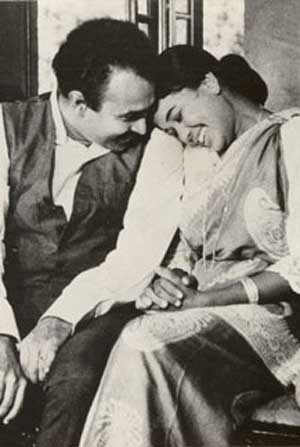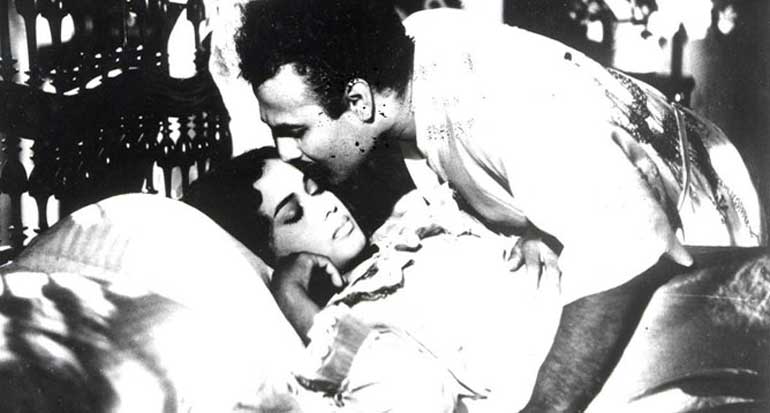Wednesday Apr 16, 2025
Wednesday Apr 16, 2025
Saturday, 3 October 2015 00:10 - - {{hitsCtrl.values.hits}}

Gamini Fonseka

Sembuge Gamini Shelton Fonseka, known generally as Gamini Fonseka – the uncrowned monarch of Sinhala cinema – passed away at the age of 68 on 30 September 2004. Gamini was one of my favourite actors since the age of eight when I first saw ‘Ranmuthuduwa,’ a film starring him at the Gamini theatre in 1962. In later life I had the opportunity of meeting and interacting with my boyhood hero. I loved Gamini Fonseka as an actor, appreciated his ability as a director, admired his conduct as a politician and above all respected the man as a decent human being.
The Gamini Fonseka foundation commemorated the legendary actor’s 11th death anniversary by organising a Gamini Fonseka Memorial Oration at the National film corporation auditorium on 30 September 2015. The lecture titled ‘Gamini the Actor-Politician’ was delivered by civil servant turned politician Dr. Sarath Amunugama.
A special screening of the movie ‘Nidhanaya’ was also shown at the same venue. A newly-restored print in excellent quality of ‘Nidhanaya’ was received with delight by the viewers. Among those in the audience were film director cum editor Sumitra Peries, singer Nanda Malini and actresses Jeevaranee, Malani Fonseka and Sonia Disa. According to journalist Prasad Gunewardene who is also a nephew of Gamini, the commemorative event went off very well.
It is indeed most appropriate that the Gamini Fonseka Foundation decided to screen ‘Nidhanaya’ to commemorate Gamini Fonseka’s death anniversary. ‘Gamperaliya’ (Village Upheaval) and ‘Nidhanaya’ (The Treasure) are regarded as the twin masterpieces of Sri Lanka’s ace filmmaker Lester James Peries. Two of Gamini Fonseka’s memorable character portrayals on screen were as Jinadasa in Gamperaliya and as Willie Abeynayake in ‘Nidhanaya’. Gamperaliya made in 1964 won the Golden Peacock Award for best feature film at the third New Delhi film festival and the Golden Head of Palenque in Mexico.
‘Nidhanaya’ made later in 1970 was entered for the 1972 Venice International Film Festival where the film won the Silver Lion of St. Mark award. It also received a certificate as one of the outstanding films of the year at the London Film Festival. ‘Nidhanaya’ was also included in the global list of 100 best films to be ever made that was compiled by the Cinematheque Institute of France to mark the World Film Centenary. The film won the award at Sri Lanka’s Golden Jubilee of Independence for being the best Sinhala movie in 50 years. It has also won critical acclaim as one of the 10 top Asian films for all time.
Entry into films
It was Lester James Peries who gave Gamini Fonseka his first break in movies through his path-breaking film ‘Rekawa’ (line of destiny). Gamini showed his face for the first time on screen in a scene in the film. He was working as a camera cum production assistant for Lester. It was Lester who made Gamini an assistant director for his second film ‘Sandesaya,’ in which he also played the second lead to Ananda Jayaratne. Gamini’s first attempt at directing was ‘Parasathumal’ in which Lester played a behind the scenes role as an adviser and guide.
Lester enjoyed working with Gamini. The veteran director summed up the working relationship between both succinctly in an interview. Here is the excerpt: “To work with Gamini was an absolute pleasure for me. Other directors have problems because he takes over and directs himself. With me it has always been without a question. Occasionally he would ask whether to do something. Otherwise, I only tell him how the scene went. Sometimes I don’t even give him directions. He knows the scene and knows what to do. He is conscientious and the spontaneity in his acting is really remarkable.”

Nidhanaya
Nidhanaya was the eighth feature film made by Lester James Peries. It is in black and white and 108 minutes long. Gamini and Malani Fonseka play the lead roles and about 75% of the scenes revolve around the pair. Gamini plays Willie Abeynayake the superstitious scion of a rich family facing financial ruin. Malani plays Irene his trusting, devoted wife. Sinhala Cinema’s foremost acting duo play their parts to perfection in ‘Nidhanaya’.
K.L. Coranelis Appuhamy and J.R.L. Fernando act as Willie Abeynayake’s elder brother and father respectively while Shanthi Lekha acts as Malani’s mother. Other actors are Saman Bokalawala as Julius, Francis Perera as Juwanis, Trilicia Gunawardene as Dulcie, Thilakasiri Fernando as Diyonis, Kumarasinghe Appuhamy as Gurunanse, Mapa Gunaratne as the doctor, Thalatha Gunasekara as the Nanny and Barry Whittington as the Government Agent.
Willie Abeynayake was one of the finest roles acted by Gamini Fonseka in his mercurial movie career. Willie living in an aristocratic mansion faces financial decline as his contractor business is a failure. He stands to lose the mansion he dwells in and is reluctant to let it go. Being superstitious he believes in an Ola leaf prediction which says a treasure would be in his hands if a virgin woman with four particular birthmarks is sacrificed atop a particular rock at a particular time.
Willie comes across such a woman in Irene played by Malani Fonseka. He marries her but does not consummate the marriage as he wants her to retain her virginity. Willie falls ill and is nursed back to health by the loving wife. Nevertheless Abeynayake goes ahead with his original plan and kills his devoted wife at the opportune time and location because of his need and greed for the ‘Nidhanaya’ or treasure. Actually he does get a treasure in his good and devoted wife but does not realise it and is prepared to sacrifice the living treasure to gain material treasure. His hopes are dashed when the predicted treasure does not materialise. He returns disillusioned and commits suicide.
The film is structured as a narrative with Willie Abeynayake prior to his intended suicide writing in his diary explaining the chain of events in his life that leads to his taking his own life. The story then is related in a series of flashbacks and voice-overs. Finally Willie hangs himself to death.
Nidhanaya was based on an original short story by G.B. Senanayake the journalist, poet and writer who went blind in the latter stages of his life. Peries apparently paid Rs. 10,000 for rights to the story. The story was then reworked into a film script by Tissa Abeysekera who had to make a two-hour-long film-script out of a five-page short story. Tissa won an OCIC award for best screenplay for ‘Nidhanaya’.
As the script evolved it became obvious that the story had to revolve around Abeynayake, the superstitious bachelor. Lester could not think of anyone other than Gamini Fonseka as the chief protagonist Willie Abeynayake. Malani Fonseka was taken to play Irene the female lead.
The cinematography is by M.S. Anandan who used Ilford film instead of Kodak to bring out in sharp contrast to show the blacks and whites. ‘Nidhanaya’ is supposedly the only Sinhala film to be shot entirely in Ilford film. Premasiri Khemadasa does the music score the highlight of which is a Western waltz composed by the music maestro. The waltz is danced by Gamini and Malani with seven costume changes.
The film is one of the very few Lester films where his wife Sumithra does not do the editing. This was because she was then in France on a scholarship. In her absence Lester himself took the plunge and together with Gladwyn Fernando and Edwin Leetin did the editing. J.A. Vincent Perera was the art director. P.E.E. Anthonypillai produced the film on behalf of Ceylon Studios.
Shooting process
The bulk of the shooting was done at the Obeyesekera-owned archaic mansion in Rajagiriya that had antique furniture and peacocks as pets in a cage. Lester would often go to Ratmalana and pick up Gamini and then proceed to Rajagiriya. The house itself can be perceived as a pivotal character in the film around which the story is woven.
The shooting of the film took over seven months as both Gamini and Malani being busy film stars could be available for only five days each month for ‘Nidhanaya’. Usually Lester shoots his films at a stretch without breaks but here it was not possible. Despite the long breaks in shooting, the continuity was maintained with great intensity by both Gamini and Malani, who complemented each other. About 70% of the film scenes featured only both the Fonsekas.
Some of the great sequences in ‘Nidhanaya’ relate to the thespian prowess of both. In the waltz sequence both had to enact the dancing steps in natural slow motion as there was no second camera available to shoot in slow motion. So both coached by Keerthi Sri Karunaratne practised the steps and then danced for the camera in exaggerated slow movements. This was a feat that required perfect coordination and both Fonsekas rose to the occasion and did themselves proud.
Another scene where Malani excelled was when Gamini suddenly slaps her and berates her. Malani acts startled and upset perfectly. What really happened was that Lester and Gamini did not reveal how the scene was going to be shot to Malani. She did not know that Gamini was going to hit and shout at her. So when it did happen she was naturally shocked and surprised. The result was a superb piece of “natural” acting.
Lester and Gamini tried a similar ruse in another scene. This was the one where Gamini was to have an epileptic fit. Gamini himself had doubts whether he could act out that scene well. So at the right time Gamini suddenly started having an epileptic fit. Since only Lester knew beforehand the other actors and technicians were all taken aback at the sight. The actors lost their cue. The cameraman dropped the camera. As a result the entire scene had to be filmed again but Gamini was now assured he could pull it off.
Another bizarre happening was the birthmarks phenomenon. According to G.B. Senanayake’s story the virgin woman to be sacrificed was to have four birthmarks. In an unbelievable coincidence Malani Fonseka had the identical birthmarks in the exact places. When told of this G.B. Senanayake refused to believe it. Later he felt the birthmarks with his fingers and shed his disbelief.
A dark, moody film
‘Nidhanaya’ is a film about both the decay of the prevalent social order and the disintegration of an individual. It is a dark, moody film and is shot in a style evocative of the term “film noir”. It is in a way different from most of the films directed by Lester James Peries. ‘Nidhanaya’ has been compared by some to ‘Jalsaghar’ by Satyajit Ray which is about the last days of a Zamindar or landlord in rural Bengal. Ray’s film made in 1958 illustrates the decaying collapse of the old order. ‘Nidhanaya’ does likewise though Peries was not inspired in this instance by Jalsaghar.
Gamini Fonseka, according to Lester, was preoccupied about whether he was really acting the part in ‘Nidhanaya’ and whether people would question the credibility of his performance. Lester in the book ‘Lester by Lester’ has praised Gamini’s role as Willie Abeynayake in ‘Nidhanaya’ thus: “Outside of Gamini, I cannot think of anybody else who would have played it with the same concentration. He was such a serious player. When given a good role, he put so much into it. He reminded me of someone like Marlon Brando who almost gets a bit too involved with the role.”
The collaborative effort of director Lester and actor Gamini resulted in the film ‘Nidhanaya’ becoming a cinematic treasure. I commend the Gamini Fonseka Foundation once again for screening Nidhanaya to commemorate the great thespian’s death anniversary.

Discover Kapruka, the leading online shopping platform in Sri Lanka, where you can conveniently send Gifts and Flowers to your loved ones for any event including Valentine ’s Day. Explore a wide range of popular Shopping Categories on Kapruka, including Toys, Groceries, Electronics, Birthday Cakes, Fruits, Chocolates, Flower Bouquets, Clothing, Watches, Lingerie, Gift Sets and Jewellery. Also if you’re interested in selling with Kapruka, Partner Central by Kapruka is the best solution to start with. Moreover, through Kapruka Global Shop, you can also enjoy the convenience of purchasing products from renowned platforms like Amazon and eBay and have them delivered to Sri Lanka.
Discover Kapruka, the leading online shopping platform in Sri Lanka, where you can conveniently send Gifts and Flowers to your loved ones for any event including Valentine ’s Day. Explore a wide range of popular Shopping Categories on Kapruka, including Toys, Groceries, Electronics, Birthday Cakes, Fruits, Chocolates, Flower Bouquets, Clothing, Watches, Lingerie, Gift Sets and Jewellery. Also if you’re interested in selling with Kapruka, Partner Central by Kapruka is the best solution to start with. Moreover, through Kapruka Global Shop, you can also enjoy the convenience of purchasing products from renowned platforms like Amazon and eBay and have them delivered to Sri Lanka.